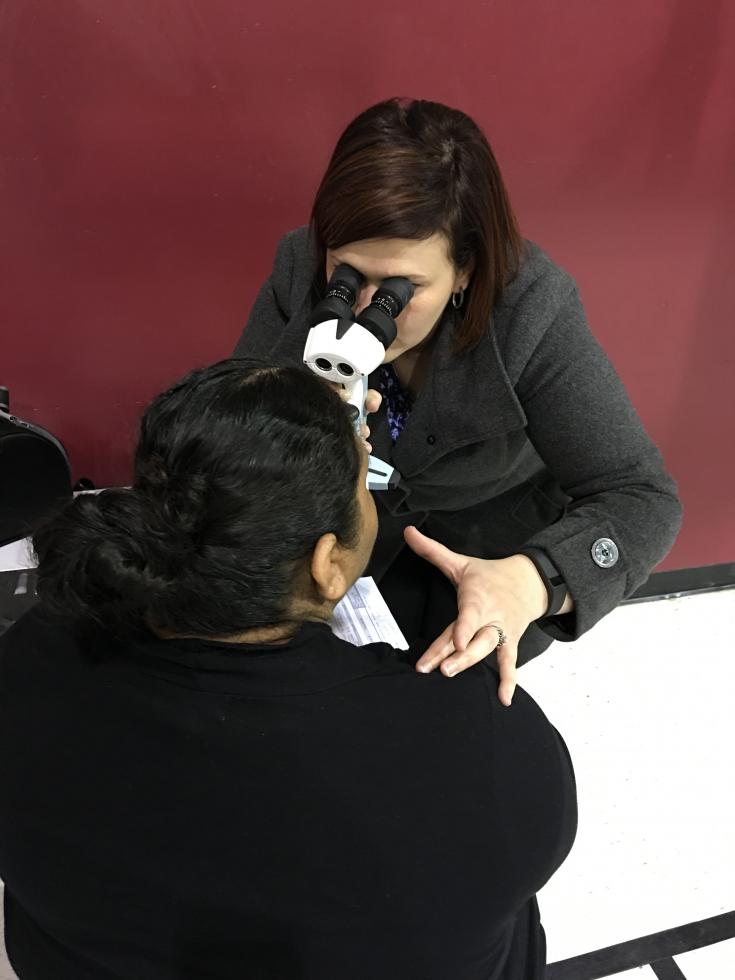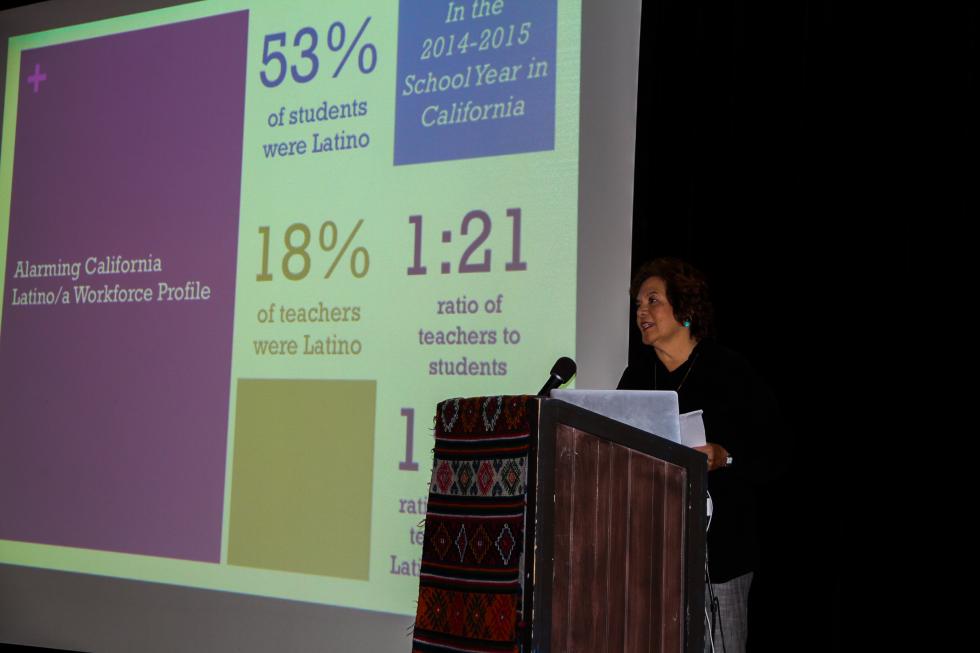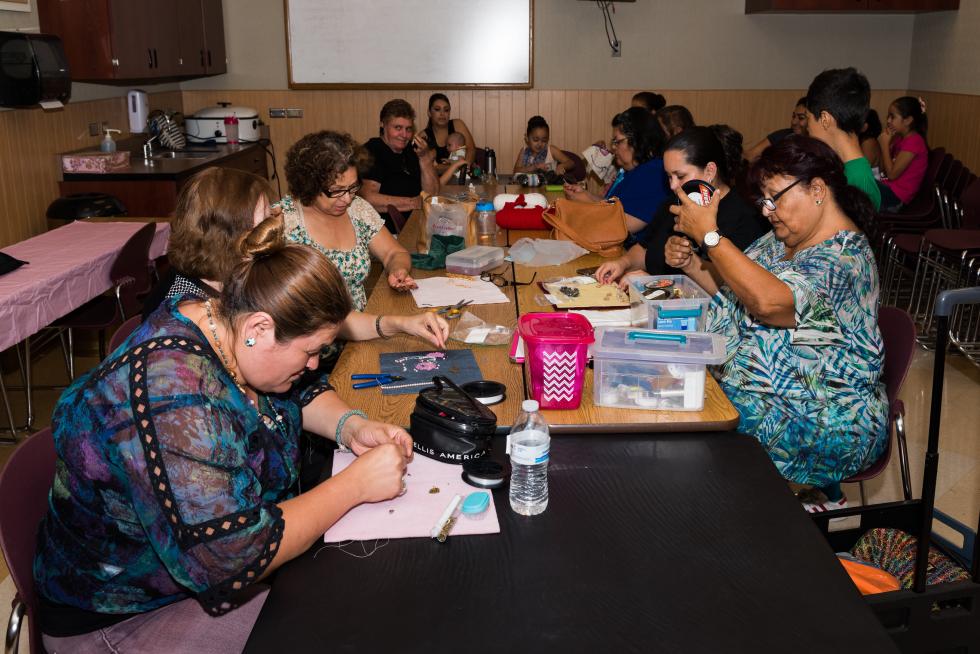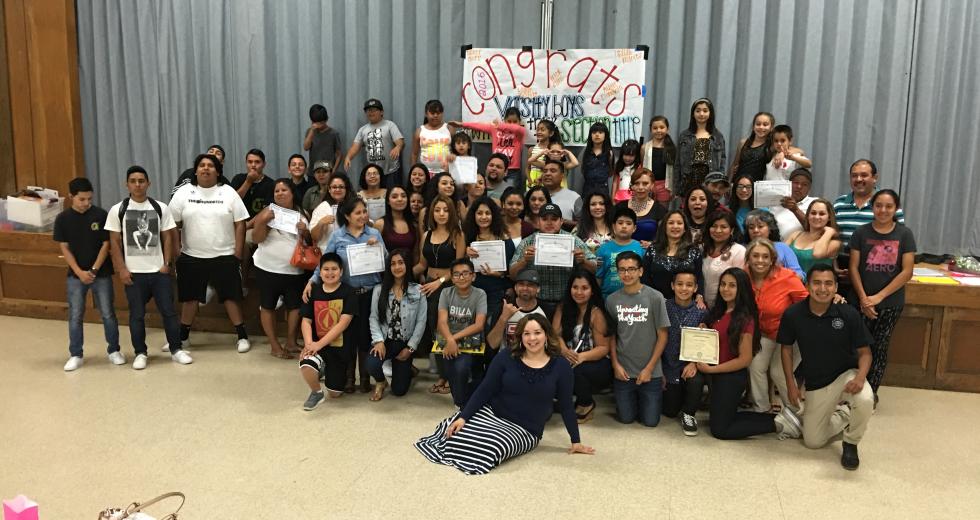Our community is faced with a chicken-and-egg dilemma: California’s demographics are shifting at a faster rate than the labor market can effectively reflect, posing difficult challenges for nonprofit organizations like ours, the Latino Leadership Council, where we focus on improving access for Latino families to health, education and youth development services. We need to expose our children to professions in order to excite them about those career paths. But we need Latino professionals to serve as role models to those kids.
When Latino kids grow up not seeing doctors, cops or college professors that look like them, they begin to think that those are not viable career choices: Those are jobs for other people. It is hard to encourage anyone to go into those professions when they don’t know people already in them.
Kaiser Permanente Ophthalmologist Dr. Bonnie Quiroz volunteers
doing vision screenings at a Latino Leadership Council health
fair. (Photo courtesy of Carlos Quiroz)

For example, Latinos make up almost 39 percent of the population in California, yet Latinos make up just 4 percent of physicians in our state. In California specifically, there are 50 Latino physicians for every 100,000 Latino patients — one of the worst ratios in the country. This isn’t only an issue of diversity; it is an issue of effectively providing services to a growing population.
Language and culture play a critical role in the delivery of health care services. Without those elements ubiquitously in place, health outcomes can be adversely affected. Take mental health services: Only 8.3 percent of behavioral health workers (therapists, social workers, family and marriage therapists, etc.) in California are Latino. Language and culture play such a critical role, that the language a patient is interviewed in may lead the health provider to misdiagnose the condition.
This challenge is not limited to health care. The Sacramento Police Department recently reported that only 10.6 percent of its officers are Latino. According to the 2015 census, nearly 15 million self-identified Latinos live in California — more than any other ethnic group. If the police do not properly reflect the community they serve, it is difficult for the community to see it as a force that represents them rather than one that polices them. This leads to crimes not being reported, witnesses not coming forward and a community preyed upon by criminals who know their victims won’t have any recourse.
Latino Leadership Board Member Rachel Guerrero speaks about the
underrepresentation of Latinos in education, health care and
other critical professions at the Latino Leadership Council’s
third annual Forum on the Latino Community event. (Photo Credit:
Al Gonzalez)

This lack of representation in every aspect of key professions creates a critical gap in effective services and bifurcates our community into those who see themselves represented in their providers and those who don’t.
The Latino Leadership Council works very closely with many schools, law enforcement agencies and other service providers. We know firsthand that the lack of Latino representation in these organizations isn’t due to a lack of desire from the organizations for a diverse workforce: Organizations want to hire bilingual and bicultural Latinos, but they have a difficult time finding candidates.
Organizations have to invest time and resources in the community, creating opportunities to connect youth with their Latino employees. Whether they serve as mentors or simply making that initial introduction to a career or work field, existing Latino employees can have a positive impact on young minds.
One of the Latino Leadership Council’s programs, Rincon de las
Comadres, offers Latinas a place to come together, share and
support each other, while learning arts and crafts. (Photo
Credit: C.S. Wright Photography)

Otherwise, organizations like the Latino Leadership Council are in the difficult position of having to send staff to accompany families and individuals to physician appointments, meetings with school principals or other important engagements with providers to help translate and ensure that the family understands and gets the service that they need. This is a band-aid approach that is not sustainable in the long-term.
Our organization would be more successful if agencies, providers and businesses in the area had workforces that better represented our whole community. Let us work together and collaborate to reshape our region’s workforce to better serve the needs of everyone.



